(Rochefort 1867 – Paris 1943)
Village of lower Corrèze
Watercolour on paper
H. 29.5 cm; W. 37.5 cm
Joseph Lépine quickly settled in Bordeaux where he learned from Louis-Alexandre Cabié, a well-known landscape painter in the region and master of many artists of the early 20th century. Despite the master's warnings, he wanted to confront the Parisian modernity of the late 19th century and discover the impressionist and even post-impressionist fashions. There he became a student of the neoclassical painters Courtois and Girardot, both former students of the great Jean-Léon Gérôme. From 1897, he exhibited at the Salon where he sent landscapes of Provence. He became a member of the Société des Artistes Indépendants in 1905, the same year that the Fauves Matisse, Derain, Vlaminck participated and became known at the Salon d'Automne. A purchase by the State of the Salon des Indépendants in 1908, Vieille boutique, now preserved at the Museum of Menton, marked an official launch of his career. He exhibited that year in London at the Royal Albert Hall, following the invitation of the Allied Artists' Association, which shows a form of distinction of the painter among the international art scene. In Paris, the artist met a certain number of well-known painters of the time in the districts of Montmartre and Montparnasse, notably Matisse and Signac. His work of painting is based in particular on his approach to the material, light and color whose juxtapositions present a play of saturation and composition from apparent reserves. After the First World War, Lépine returned more to his region of origin, where he painted landscapes around Bordeaux and up the course of the Dordogne to the charming landscapes of the lower Corrèze. Beaulieu-sur Dordogne, Argentat, but also the Lot with the built escarpments of Saint Circq Lapopie. The city of Bordeaux and the State acquired two of his works representing a landscape near Verdelais and a view of the Church of Saint-Michel in Bordeaux in 1939 and 1941. Considered today as a very important figure in Bordeaux painting, and the only "post-impressionist" of the Girondine school, he holds his place on a national scale. A retrospective exhibition at the Musée d'Eysines was dedicated to him in 2021.
Our watercolor (a rare medium for Lépine) does not deviate from his technique and his atmospheres. Tight shots, intersections of architectures and roofs, a classic ensemble for this artist. This subject has been represented from the same angle at least three times, without the works having been precisely located. Nevertheless, stylistically, we are situated in the bordering architectures of slate and flat tile, like the few kilometers which separate Argentat and Beaulieu sur Dordogne, on the borders of Corrèze and Lot.




















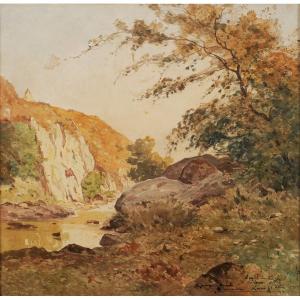


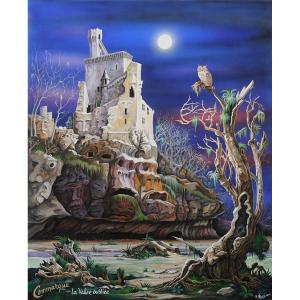

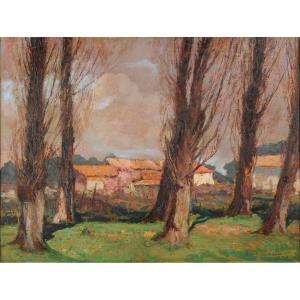
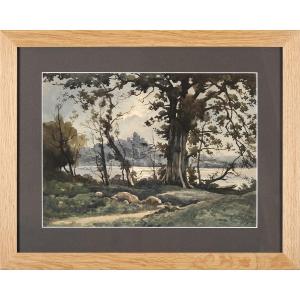
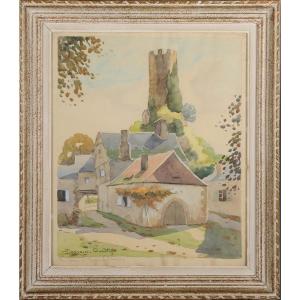



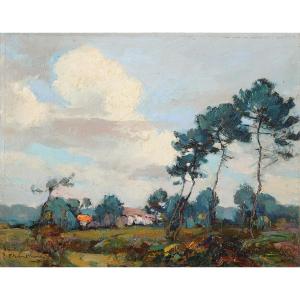
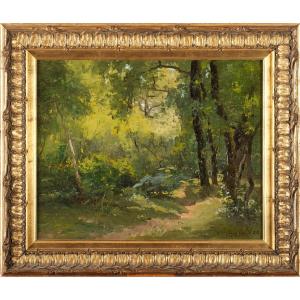

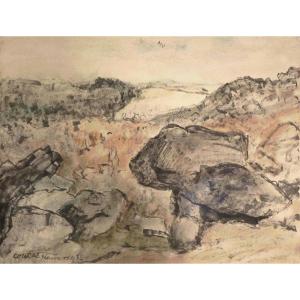
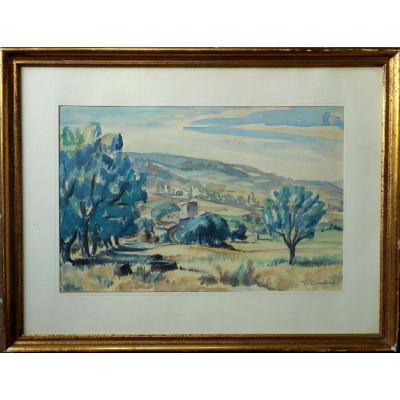






 Le Magazine de PROANTIC
Le Magazine de PROANTIC TRÉSORS Magazine
TRÉSORS Magazine Rivista Artiquariato
Rivista Artiquariato